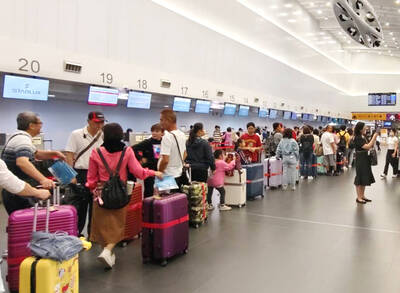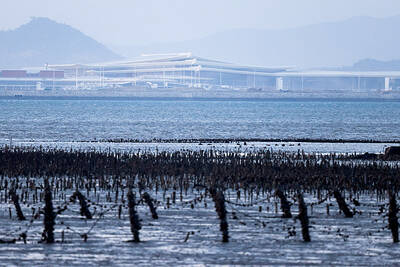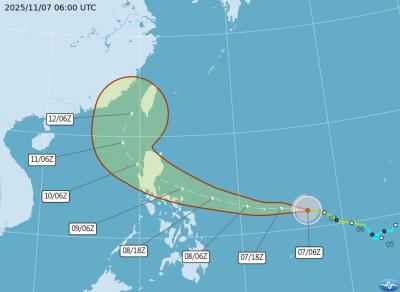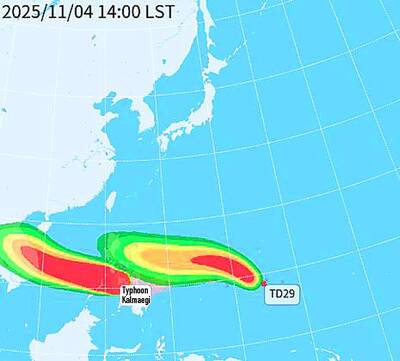The National Communications Commission (NCC) yesterday said that the government would release the 2,500MHz and 2,600MHz frequency bands for 4G telecom service use, adding that the auction of these two bands is scheduled to take place at the end of the third quarter this year.
NCC Chairperson Howard Shyr (石世豪) said that the commission would hold an information session next month, in which the commission’s officials would explain the rules of the auction and other relevant matters in detail, and hear thoughts and ideas from interested carriers.
As some of the frequency blocks are currently being used by WiMAX service operators, Shyr said that the WiMAX carriers could continue to use these frequencies if their licenses are renewed, allowing them to use the spectrum for another six years. The 4G operators acquiring frequencies in the spectrum currently used by WiMAX operators could gain access if the two parties negotiate a deal, he said.
Shyr said that First International Telecom and Far EasTone Telecommunications have both terminated WiMAX offerings and returned portions of the spectrum they used to the government, adding that Tatung Infocomm’s WiMAX license renewal had already been turned down by the NCC. The commission plans to review the license renewal applications from three other WiMAX operators this year — Global Mobile, VMAX and VeeTim.
Based on the commission’s preliminary plan, the two stated frequency bands have 190MHz in bandwidth that would be placed on auction. Within that spectrum, 50MHz would be reserved for use by time division-long term evolution (TD-LTE) technology, whereas the remaining 140MHz would be used for the development of TD-LTE or frequency division-long term evolution (FD-LTE) technology.
To avoid interference between these two technologies, telecoms acquiring TD-LTE bandwidth must give up 10MHz to be used as guard bands.
TD-LTE and FD-LTE are the two main technologies used to offer 4G services.
Asked whether the development of TD-LTE would generate national security concerns, as China has been pushing the use of such technology and is the main supplier of related equipment, Shyr said that the plan to release the frequency bands has been reviewed by the nation’s national security agencies, which have not changed their standards.
Shyr said, current 4G service providers can acquire these bandwidths to enlarge their capacity in a bid to meet dramatically increasing demand for data transmission.
He also said that the commission would set a lock-up period, which would require telecom carriers to fulfill their service commitments before they can be allowed to merge their operations.
In response to some telecom carriers’ claims that they do not need additional bandwidth to offer 4G services, Shyr said that the commission would this year begin testing the transmission speeds of 4G services offered by different carriers, and that the test results would be disclosed to the public periodically.
Carriers do not have to bid for additional bandwidth if they do not need them, he said.
Taiwan began to release frequency bands for 4G operation last year, in which three frequency bands — 700MHz, 900MHz and 1,800 MHz — were placed on public auction.
Six telecom carriers garnered a total bandwidth of 270 MHz within these three bands — Chunghwa Telecom, Taiwan Mobile, Far EasTone, Asia Pacific Telecom, Ambit Microsystems Corp and Taiwan Star. The merger of Asia Pacific and Ambit, which occurred soon after the auction, has yet to be approved by the NCC.
The government received NT$118.6 billion (US$3.8 billion) from the auction last year, three times higher than the floor price. This year, the government has set the income from the auction to be at least NT$25 billion.
Telecoms offering 4G service began LTE operations at the end of May last year, the administration said, adding that 4G service subscribers have grown to a total of 4.02 million as of last month.

Three Taiwanese airlines have prohibited passengers from packing Bluetooth earbuds and their charger cases in checked luggage. EVA Air and Uni Air said that Bluetooth earbuds and charger cases are categorized as portable electronic devices, which should be switched off if they are placed in checked luggage based on international aviation safety regulations. They must not be in standby or sleep mode. However, as charging would continue when earbuds are placed in the charger cases, which would contravene international aviation regulations, their cases must be carried as hand luggage, they said. Tigerair Taiwan said that earbud charger cases are equipped

UNILATERAL MOVES: Officials have raised concerns that Beijing could try to exert economic control over Kinmen in a key development plan next year The Civil Aviation Administration (CAA) yesterday said that China has so far failed to provide any information about a new airport expected to open next year that is less than 10km from a Taiwanese airport, raising flight safety concerns. Xiamen Xiangan International Airport is only about 3km at its closest point from the islands in Kinmen County — the scene of on-off fighting during the Cold War — and construction work can be seen and heard clearly from the Taiwan side. In a written statement sent to Reuters, the CAA said that airports close to each other need detailed advanced

Tropical Storm Fung-Wong would likely strengthen into a typhoon later today as it continues moving westward across the Pacific before heading in Taiwan’s direction next week, the Central Weather Administration (CWA) said. As of 8am, Fung-Wong was about 2,190km east-southeast of Cape Oluanpi (鵝鑾鼻), Taiwan’s southernmost point, moving westward at 25kph and possibly accelerating to 31kph, CWA data showed. The tropical storm is currently over waters east of the Philippines and still far from Taiwan, CWA forecaster Tseng Chao-cheng (曾昭誠) said, adding that it could likely strengthen into a typhoon later in the day. It is forecast to reach the South China Sea

WEATHER Typhoon forming: CWA A tropical depression is expected to form into a typhoon as early as today, the Central Weather Administration (CWA) said yesterday, adding that the storm’s path remains uncertain. Before the weekend, it would move toward the Philippines, the agency said. Some time around Monday next week, it might reach a turning point, either veering north toward waters east of Taiwan or continuing westward across the Philippines, the CWA said. Meanwhile, the eye of Typhoon Kalmaegi was 1,310km south-southeast of Oluanpi (鵝鑾鼻), Taiwan’s southernmost point, as of 2am yesterday, it said. The storm is forecast to move through central